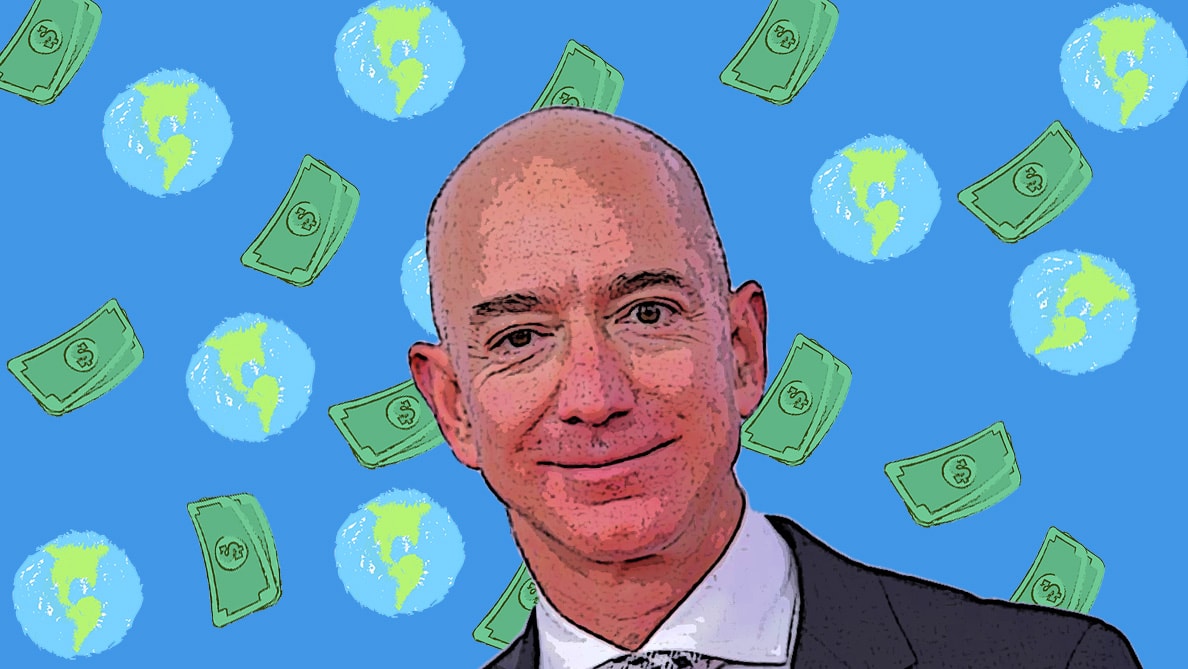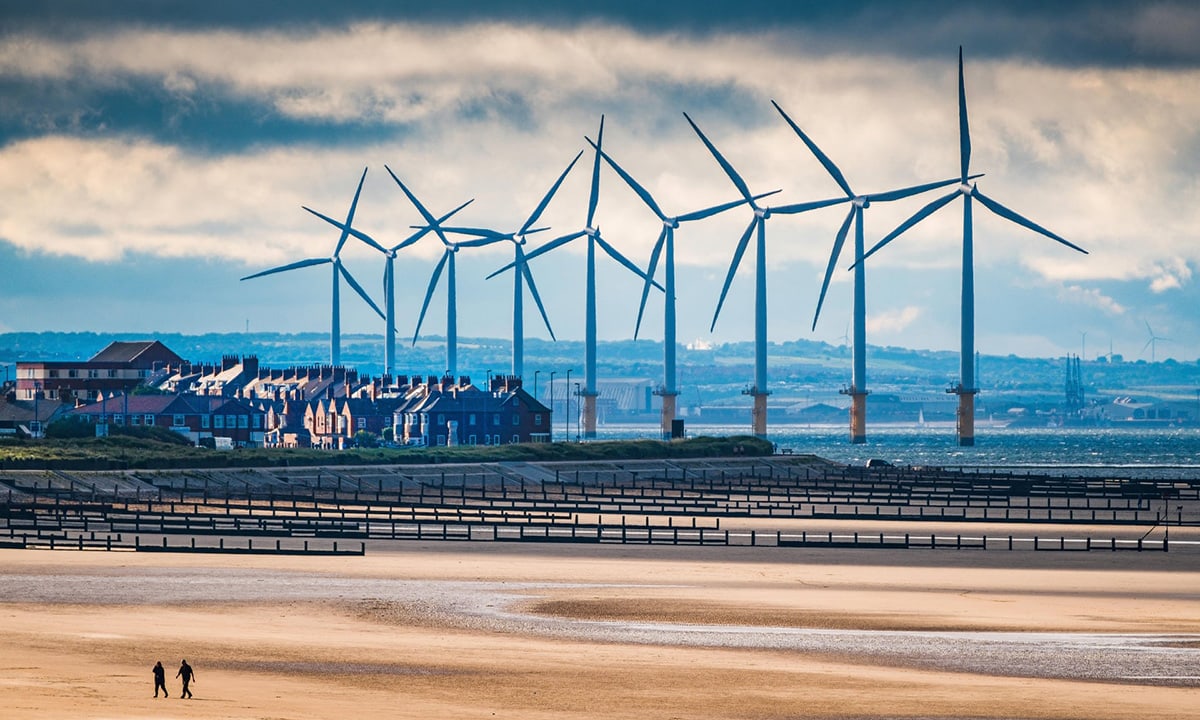 This article was originally published in Wired and is republished here as part of Covering Climate Now, a global journalistic collaboration to strengthen coverage of the climate crisis, of which UP' Magazine is a member.
This article was originally published in Wired and is republished here as part of Covering Climate Now, a global journalistic collaboration to strengthen coverage of the climate crisis, of which UP' Magazine is a member.
Jeff Bezos, the billionaire boss of Amazon announced a few days ago that he was giving 10 billion dollars of his personal fortune to save the planet. A spectacular announcement that immediately went around the world. The details of this investment are, however, very scarce at the moment; the only thing we know is that the money will go into a "Bezos Earth Fund" and will be used to finance scientific research, climate activists and NGOs. The richest man in the world says he wants to "find new ways to combat the devastating impact of climate change on this planet we all share". If Jeff Bezos is short of ideas, we can offer him some. Wired magazine has taken up the challenge and in this article we present a few ideas where Bezos could help. Ideas that would radically change the face of the world.
On February 17, Amazon's CEO and the world's richest man, Jeff Bezos, announced that he was devoting nearly 8 % of his net worth to the fight against climate change. The money, known as the Bezos Earth Fund, will be used to support "any effort that offers a real opportunity to help preserve and protect the natural world," Bezos wrote in a post on Instagram. There are, of course, many problems with a billionaire dictating alone how the global community will fight climate change. But it is also true that there are a multitude of promising climate technologies that lack the resources to scale up quickly enough to effectively meet the climate goals of the Paris Accord. Bezos did not specify how he was going to allocate resources from the Earth Fund, but if you read this, Jeff, we have some ideas.
Solar energy from space
Currently, 173 trillion billion billion watts of solar energy bathe the Earth. If we captured only 1 % of this, it would be enough to meet the planet's energy needs. But absorbing the rays is more difficult than it seems. Cloud cover limits the efficiency of solar panels, high-end photovoltaic cells are not very efficient at converting sunlight into electricity, and solar power is not an option for half the planet at any given time.
Yet if you were to build a giant solar farm in space and transmit this energy to Earth, the sun's energy would be available 24 hours a day. Isaac Asimov came up with the idea of solar energy in space in the 1940s. A handful of companies such as Solaren and Solar Space Technologies tried to create companies around space solar power, but did not have the capital to carry out their technology.
Last year, the Air Force research laboratory, DARPA, announced a $100 million program to develop a satellite that would bring solar energy to Earth. If Bezos were to dedicate just one percent of the Earth Fund to space solar energy development, it would effectively double the funding available in the United States. If he wanted to be even nicer, he could offer solar power satellites to be put into orbit on one of his rockets. Although Blue Origin, Bezos' space company, has not yet sent a rocket into orbit, it plans to do so by next year.
Improved geothermal energy
Geothermal energy uses superheated water from the depths of the Earth to drive turbogenerators at the surface. It is a promising source of clean, inexhaustible electricity that could meet the planet's needs many times over. But at present, it accounts for far less than 1 % of the world's electricity supply. The problem is that geothermal energy is limited to regions that have natural sources with water hot enough to run the turbines with their steam.
Enhanced geothermal systems are technologies that promise to make the Earth's energy available almost everywhere. Instead of relying on natural sources, these systems borrow techniques from the fracturing industry by drilling deep into hot dry rock and pumping water into the newly created chamber. The water is heated to several hundred degrees and returned to the surface, where it is used to power a turbogenerator. The hot rock needed for these systems is available worldwide. What is missing is the drilling technology and the technical knowledge to access it: if you drill in the wrong place, you risk triggering a massive earthquake.
Although a number of companies are developing improved geothermal systems, they are struggling to raise the funds to build them. Drilling wells is a very capital-intensive process and, because it is a new technology, it carries a lot of risk for investors. In January, the U.S. Department of Energy announced $25 million for research into improved geothermal systems, barely enough to get the industry off the ground. The interest alone on the Earth Fund's bank account would already be a huge windfall for this fledgling industry.
Small modular nuclear reactors
Since 2011, Bezos has been investing in General Fusion, a Canadian company trying to build the world's first nuclear fusion plant. It's a long-term gamble to create an unlimited source of clean energy by building an artificial sun. Fusion works by making atoms collide with each other so that their nuclei fuse and release an enormous amount of energy. A fusion power plant would be able to produce several times more energy than a traditional nuclear power plant, without generating long-term toxic waste in the process.
Today, fusion power plants are far from being commercialized. It is unlikely that we will see fusion energy coming onto the grid in the next 20 years because of the challenges of maintaining the reaction that makes fusion possible. But in the meantime, the Bezos Fund could invest in advanced nuclear fission energy such as small modular reactors. Unlike the nuclear power plants of the past, small modular reactors are tiny and can be chained together like daisies to meet energy needs that vary by region, time of day or season. The design of small modular reactors reduces the risk of meltdown, which means they can be placed closer to the cities and towns that need them. They can also be manufactured on an assembly line, which significantly reduces their cost.
Although the word "nuclear" triggers hives in some environmental circles, the United Nations Intergovernmental Panel on Climate Change (IPCC) has recognized that it will play a key role in the fight against global warming.
Yet the development of nuclear technologies is incredibly expensive and it takes years to overcome the regulatory hurdles involved in setting up a system. To accelerate this process, the Earth Fund could diversify Bezos' nuclear portfolio by injecting money into the emerging advanced nuclear industry.
Sustainable hydrogen production
The eternal promise of a hydrogen economy is to use the most abundant element in the universe to heat our homes, store our energy and power our cars. Proponents of this technology say it will save the world by ending our dependence on fossil fuels like natural gas and oil. There's just one problem: we can't yet produce hydrogen sustainably on a large scale. What is certain is that we know how to produce a lot of hydrogen. But in general, the process involves the consumption of natural gas. If we want to use hydrogen to decarbonise the world sustainably, we need to exclude fossil fuels from the equation.
Thorium nuclear energy
But small reactors are hardly the only advanced nuclear technology in development. The thorium molten-salt reactorsfor example, use virtually no uranium. This reduces both nuclear waste and the risk of nuclear weapons proliferation by limiting the amount of enriched uranium in circulation. Next-generation fast breeder reactors can use nuclear waste as fuel and have sophisticated cooling mechanisms that limit the risk of meltdown. While other advanced nuclear technologies show promise, many of them still have to overcome numerous technological and regulatory hurdles before they are ready to enter into service. This limits their ability to address climate change in the short term.
One of the best ways to do this would be to divide the water, which involves breaking down H~2~O into its constituent elements - hydrogen and oxygen - using large amounts of electricity or heat. But dividing water to scale requires an enormous amount of energy, and since the world still runs mainly on fossil fuels, these often end up providing the energy. To foster a sustainable hydrogen economy, a 2017 U.S. Department of Energy report called for water-sharing efforts to be fueled by renewable energies such as wind and solar power. The report also launched the idea of using heat from advanced nuclear reactors to increase U.S. hydrogen production without further contributing to climate change.
But creating a giant supply of hydrogen won't do much good if there's no way to use it. Today, automakers are developing hydrogen fuel cells, so when the hydrogen economy finally arrives, they will be ready to take advantage of it. However, right now no one wants to buy a hydrogen car because there is no supply of hydrogen. This is the classic chicken-and-egg problem. The Earth Fund could break the deadlock by committing to rapidly increase sustainable hydrogen production, finally giving the hydrogen fuel cell industry the supply it needs.
Time is the enemy in a rapidly warming world, and it is imperative that we decarbonize our energy as quickly as possible. If Jeff Bezos were to invest only a small fraction of the Earth Fund in these climate technologies, it would significantly accelerate their deployment. But if technology is a cure, it can also be a poison. According to Amazon's own statistics, the company releases 44 million tonnes of carbon into the air each year from its delivery vehicles, data centres and other indirect sources, far more than Microsoft, Google or Apple. If Bezos really wants to fight climate change, its own company may be the best place to start.
Daniel Oberhaus is an editor at WIRED, where he covers space exploration and the future of energy. He is the author of Extraterrestrial Languages (MIT Press, 2019) and was formerly the editor of Motherboard.












